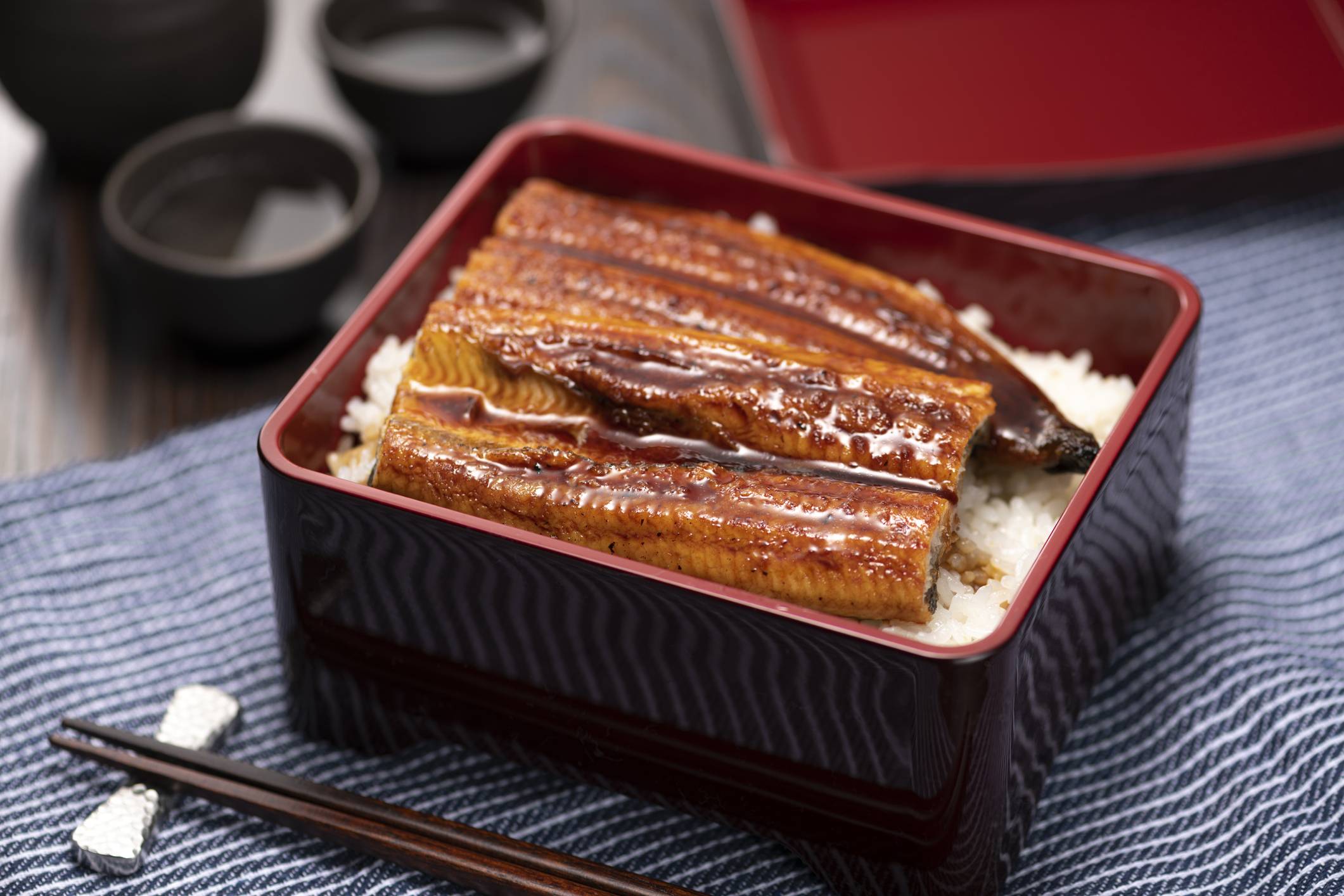Doyo no Ushi no Hi (Midsummer Day of the Ox), a traditional day to eat unagi (Japanese eel), may be long past, but there’s no “off” season for eating eel in Japan.
The “natural” maturity of eel is reached in fall, which gives rise to aki-unagi: autumn eel. Popular chains such as Matsuya display the traditional hiragana “u” of “unagi,” shaped like a wiggling eel, on banners adorned with red maple leaves. Eel also features in furusato nōzei promotions, in which taxpayers can opt to pay taxes in their hometowns, rather than where they actually live, in exchange for gifts — often luxury foods.
There are also places where unagi is a year-round meibutsu (local specialty) — Narita, Chiba Prefecture, for example. Here, diners congregate to watch as wriggling unagi are slammed onto wooden blocks, pinned in place with a stake and filleted head to tail in seconds. The brutal pizzazz of the ceremony can be hard to reconcile with the result: Delicious unajū (grilled eel on rice, served in a lacquered box) or other kabayaki (filleted and grilled) variants, almost always with lashings of tare sauce.



